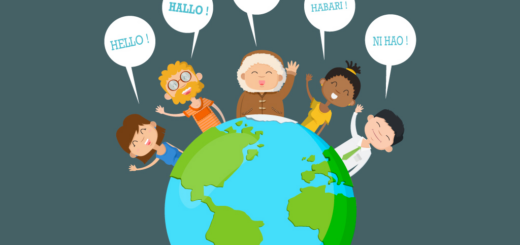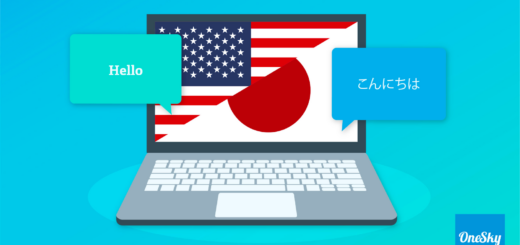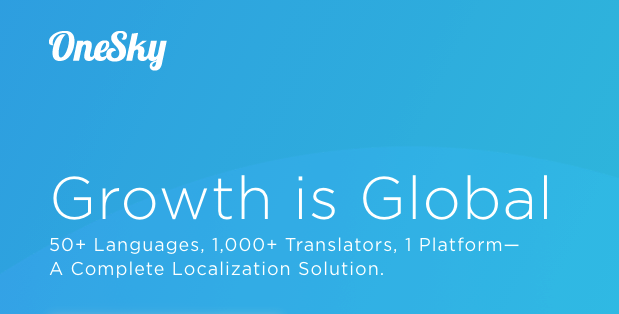Can I Trust Google Translate for Localization?
What is Google Translate?
Google Translate is Google’s free translation tool that offers primary translation of documents, sites and raw web content between languages.
Current updates to the platform have seen tremendous improvements influenced by the optimization of machine translation as a field, such as snap-to-translate functionality, image translation and simultaneous translation capabilities.
Understanding how Google Translate works is the first step to determining the accuracy of Google Translate. It runs using algorithm-influenced technology—namely NMT (or GNMT), otherwise known as neural machine translation. While the translation services provided by artificial intelligence can be helpful in a pinch, they are not generally recommended for corporate branding, communication or marketing purposes.
In this article, we’ll be discussing how accurate Google Translate really is, and different considerations you should keep in mind when evaluating its use in your marketing strategy.

How does Google Translate work?
We’ve stated above that Google uses GNMM or GNMT (Google neural machine learning) to provide its automatic translation services—but what does that really mean?
NMT is considered to be very fluid. Much like human brains, it takes millions of inputs per minute and uses them to continue learning intangible translation elements, such as intent and nuance. This can be especially helpful for translations to or from nuance-heavy dialects, such as English, Spanish or Chinese.
Once the target language is chosen, the NMT works to provide you with the most accurate translation based on its influx of inputs. While convenient, this means that you may not be getting the most accurate or useful translation available—potentially compromising your end product.
Google Translate is Accurate, but Not Reliable for Localization
Google Translate has been statistically suggested to have about a 94% accuracy rate — which can help when traveling abroad, but isn’t really useful for brand-critical initiatives like localization and file translation.
Brands currently using Google Translate may often rely on the support of native speakers or translators for different languages, turning English translations and phrases into digestible, nuanced and complete references in other languages. OneSky, for example, has a team of 1,000+ translators who can translate across 50+ languages, giving you a seamless and accurate translation experience.
Drawbacks of Using Google Translate
There are many different possible drawbacks to using a tool such as Google Translate or Microsoft Translator that go above and beyond translation accuracy or translation errors. Read on to learn more about the different considerations you should make before using these tools for your localization needs.
Meaning can be lost in translation.
Phraseology and context are incredibly important elements of language, often taking different forms within specific languages and dialects. Honoring this concept throughout the translation process can prevent key details from being lost in translation — and is generally done best by a seasoned native speaker or translator who has the know how to review elements like syntax and intent behind individual words.
Google neural machine translation (NMT) can do this to an extent, but it is not nearly as helpful as a specialist in translation work. Other variations used by tools (such as SMT, or statistical machine translation), may be even less effective compared to humans.
The quality of translation is inconsistent and varies from language to language.
When the context is lost, the overall quality of the translation may suffer. The translated text must mirror the exact meaning and impact of the source text to be considered a success, which is a concept that spans all translatable languages—from French and German to Korean and Portuguese.
When brands use translation software rather than a skilled, human-led translation system, they leave much up to chance. Grammatical rules may wind up being inefficient suggestions, and your text may easily take on different meanings. This can result in ineffective (and potentially harmful) content being published that is associated with the brand.
Translations can contain significant grammatical errors.
As mentioned above, grammatical errors can abound when translation software or deep learning is used. As it is considered fluid technology, it’s not done learning yet. This means that instead of getting a polished final product as a result of your inputs, you will instead receive the sum of every input prior to yours—whether it is considered to be grammatically correct by current sociocultural standards or not.
Human translators can give you the finesse that can take your globalization strategy to the next level, giving your customers the cultural respect they deserve—providing content that is correctly presented using the rules of their language.
The algorithm can’t detect if the translation makes sense.
Human translators have the benefit of previous experience with the language, and the ability to evaluate context as they work through the translation steps. Algorithm-driven tools, on the other hand, can’t really tell if the content makes sense—which can pose some pretty serious issues pertaining to quality. Understanding this concept and planning around it with quality, human-led solutions can preserve brand identity in the long run.
It can’t always figure out word order, gender, or tone.
Word order and tonality are critical components of any type of content, whether it’s translated or native. It makes the work impactful and able to be communicated properly, which is why these parts of translation and communication must be assessed before making a final determination regarding which translation tool you’ll use for the business.
Professional translators are often native speakers, allowing them to quickly and correctly organize text into human-forward flows. They can take elements such as gender (if applicable), tone and word order into account, leaving you with the best possible end result. While AI-based solutions can often convey a general idea, it is often done without consideration for these factors, leaving consumers with a less-than-optimized result.

Trust the Human Expertise at OneSky for Your Localization Strategy
Is Google Translate suitable for business and marketing purposes? Not usually. While the tool is helpful in certain situations, it does not have the depth, comprehension or proven aptitude to handle key elements of communication—such as nuance, tone, gender (if applicable) and contextual inferences. Human translators are your best resource for high-quality content that can impact clients on a global scale.
OneSky offers translation management services you can count on in an affordable and accessible way. Connect with us today to get started for free, and enjoy the benefits that our human-led translation management system (TMS) has to offer. We’re here to help!









 Written by
Written by 



Highly energetic article, I loved that a lot. Will there be a part 2?